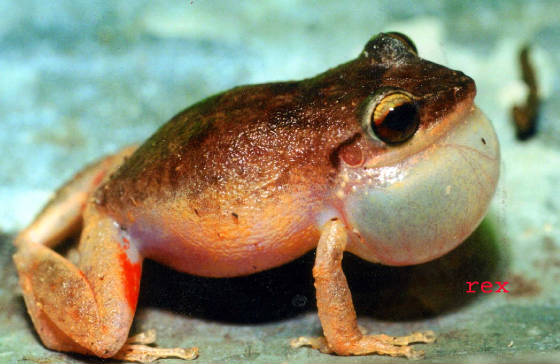Introduction of Non-Native Species
Group Members
Raven, Joanna
Non-native species are species from one part of the world that are introduced (often by humans) to a new ecosystem. Some of these species will fail to survive, but many will thrive. When a non-native species sucessfully establishes itself within a foriegn ecosystem they are known as invasive species. The introduction of a species into an foriegn ecosystem can be a harmful occurance. These invasive species can cause extinction of some species natural to the invaded ecosystem.
Great Lakes
Zebra mussels are a major non-native, invasive species found in the Great Lakes. Zebra mussels are originally native to the Black and Caspian Seas, but in 1988, these creatures were discovered in Lake St. Clair. They quickly spread throughout the Great Lakes and several other waterways in the US and Canada. Researchers believe that these species were accidentally transported to America by ships.
Zebra mussels are known to have such a high reproductive rate. A single female mussel can produce anywhere from 30,000 to 40,000 eggs per year, so it is not oblivious that this creature happens to be invasive. Also, the zebra mussel does not have any known natural predators in its habitat. They are able to attach themselves to hard, underwater surfaces, and when that happens they can reproduce very efficiently. Zebra mussels have the potential to be very harmful to our ecosystem. They can severly impact electric power generation and water intake facilities. They can also disrupt food webs, underwater navagation, and recreational activities.

http://www.watershedcouncil.org/zebra%20mussel%20cluster%20-%20small.jpg
Hawaii
The coqui tree frog is non-native species of Hawaii. They originate from the Caribbean and were accidentally brought over along with several plants. Coqui frogs are small in size and they are non poisonous. For the most part, these frogs seem pretty harmless to humans and the environment, but what really gets on the residents' and visitors' nerves is their annoying mating call. Although the coqui tree frog may be annoying to its residents, they aid in getting rid of pesky insects. Because of Hawaii's humid environment, it is infested with all kinds of harmful insects, but since the coqui frogs are around the insect population is declining.
![]()
The only concern the residents have is that there, someday, may be an over-population of coqui frogs. An over-population may eventually lead to disease. Others believe that the frog population will stabilize itself. Coqui frogs may start to eat their own kind if hungry, and other predators will feed off of these frogs, thus leading to a balanced population.

http://ltmtnele.tripod.com/sitebuildercontent/sitebuilderpictures/.pond/coqui1.jpg.w560h364.jpg
Australia
Cane toads were first introduced to Australia in 1935. These toads were brought over from Hawaii in hopes of decreasing the cane beetle population. Sadly, the cane toads could not jump high enough to catch the beetles. Instead of eating cane beetles, the cane toads ate frogs and pretty much anything that they could fit into their mouths.
The cane toad can grow up to 25 centimeters long and can weigh up to 4 kilos. The cane toad is also very poisonous, so there really are not any natural predators. They are simply able to kill any animal that tries to eat them, regardless of its size. Cane toads are responsible for the loss of several species native to Australia. A cane toad is also able to lay 33,000 to 60,000 eggs per year. Plus, they are immune to most toxins that come their way, so it is inevitable that they are such invasive species.
Cane Toad Video: National Geographic


http://www.ypsidixit.com/blog/archives/toad2.jpg http://www.abc.net.au/reslib/200703/r134140_450686.jpg
Galapagos
The ecosystem of the Galapagos is unique and colorful. This amazing display of biological diversity is being disrupted by the introduction of a variety of non-native species. According to a recent study, 60% of the 1,880 local plants are being threatened by invasive species coming into the Galapagos. It also showed that there have been 53 new invertabrate species, and 490 insect species introduced into the ecosystem.
http://www.hear.org/galapagos/invasives/topics/management/vertebrates/projects/pi.htm

One of these invasive species is the Goat. These animals were left on the islands by Whaler Floats to ensure fresh meat was available. The Goats were later introduced as livestock by colonizers. The effects of these goats have been terible. They cause erotion, reduce vegitation, displace native animals, and destroy the biodiversity of the islands. There are however projects to help maintain the islands natural health. One such project is known as Project Isabela.
http://www.hear.org/galapagos/invasives/features/gef.htm

Solutions
There are many organizations that are trying to help protect the natural ecosystems at risk due to non-native species. One organization is the Cooperative Islands Initiative. This group along with many others are trying to stop the spread of invasive species into foriegn ecosystems. There are many things that we can do to help as well. These solutions may seem tedious and time consuming, but when we weigh the consequences of not taking these procautionary measures against the effort put into them, it's evident that the time is well spent. We need to be more aware of our impact on the lands we travel to, and their fragile ecosystems.
Citations
"About The Coqui!." 2002. Coqui Hawaiian Integration and Reeducation Project. 20 Feb 2008 <http://www.hawaiiancoqui.org/aboutcoqui.htm>.
Rehkopf, Mathew. "Zebra Mussels: The New Nuisance of the Great Lakes." Spring 2000. Adrian College. 20 Feb 2008 <http://www.adrian.edu/chemistry/th/Somelinks/Spages/mrehkopf/mrehkopf.php>.
"The Unwanted Amphibian." October 4, 2005. 20 Feb 2008 <http://www.fdrproject.org/pages/toads.htm>.
"Project Isabela." 19 Feb 2008 <http://www.hear.org/galapagos/invasives/features/gef.htm>.
"Solutions." Non-Native Species a Brief Account 19 Feb 2008 <http://library.thinkquest.org/03oct/00946/solutions/solutions.htm>.
"ISSG." 19 Feb 2008 <http://www.issg.org>.
"Unchecked tourism puts galapagos islands at serious risk." 19 Feb 2008 <http://www.dancewithshadows.com/travel/galapagos-islands-tourism-environment.asp>.